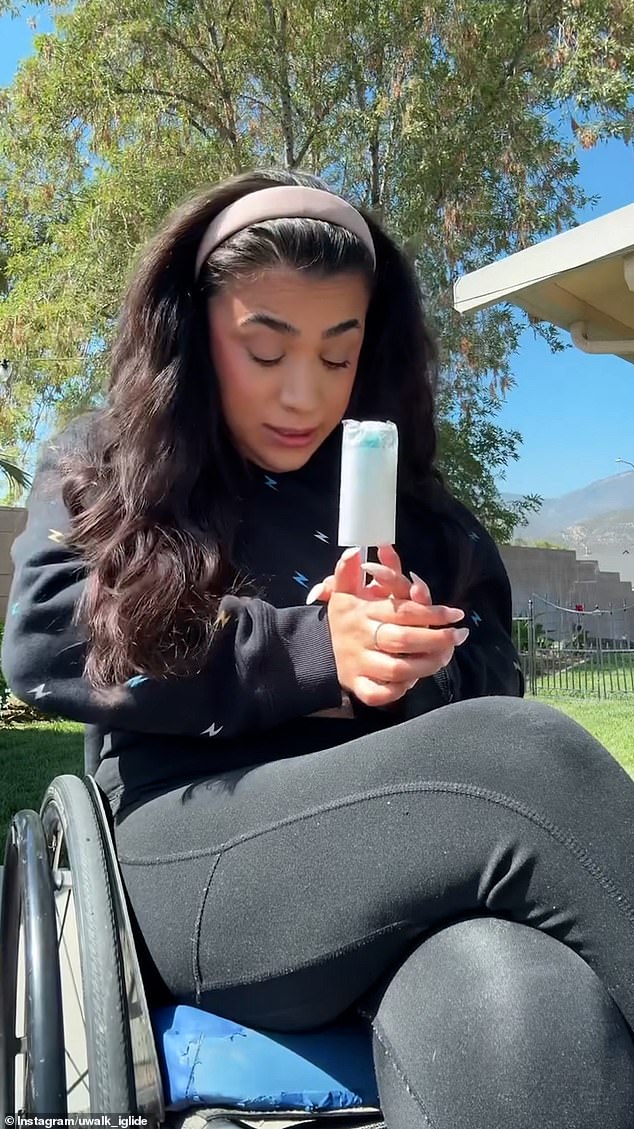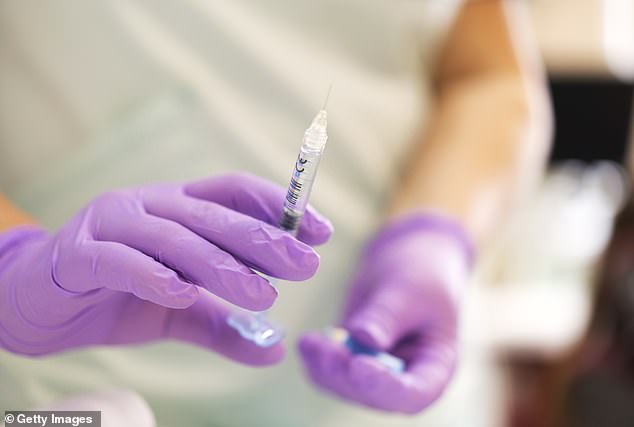Woman, 26, reveals she pees through her BELLY BUTTON after unusual surgery… and shows how it works in viral video
A make-up artist has told how she pees through her belly button as a result of life-saving surgery she had to undergo after a devastating car crash.
Steph Aiello, from Glendora, California, was scheduled to begin training to become an esthetician in October 2010.
But just a day before it started, she was involved in a major accident that killed one of her best friends and left her paralyzed.
Not only did she lose control and function of her bladder, the accident also limited her ability to use her hands.
A ‘brutal’ procedure years later, in which the bladder was guided to her navel, allowed her to regain some control over her body.
Steph Aiello, from Glendora, California, was scheduled to enter cosmetology school in October 2010. But heartbreakingly, just a day before it started, she was involved in an accident that also killed one of her best friends.

The accident caused her to lose all control and function of her bladder and also limited her ability to use her hands. But thanks to a ‘brutal’ procedure years later, which involved redirecting the bladder to her navel, she was able to regain control of her body.
Now, at one video seen by Ms. Aiello’s 260,000 plus Instagram followers, the paralyzed beauty influencer has shared how she uses the toilet in an effort to help break the stigma faced by people with disabilities around the world.
And social media fans reacted with surprise, praising Ms Aiello for bringing attention to the condition.
One wrote: ‘As a home care nurse I thought I’d seen it all, but I’ve never heard of this! Thanks for sharing.’
Another added: ‘I had no idea that was a thing. Thanks for the training.’
Meanwhile, a third said: ‘Thank you for being so brave to show us that. Thanks for letting us know.”
In the video, she talked about the intriguing sign that tells her she needs to go to the bathroom.
“My eyes are starting to get a little watery,” she said, adding that this precedes symptoms of an immune system response called autonomic dysreflexia.
Autonomic dysreflexia is an abnormal overreaction of the nervous system to stimulation.
It causes a number of symptoms, including sweating and a fast heartbeat, and causes blood pressure to rise rapidly.
In people with a spinal cord injury, this is usually caused when the bladder is full and needs to be emptied.
Holding up a long cylindrical compact blue catheter, known as a SpeediCath, Ms Aiello added: ‘I can be anywhere I want.
“If I stick it in my belly button, it actually goes into my bladder.”
By pushing the catheter into her belly button, she can urinate.
When she’s done, she puts her thumb into a “little loop” on the catheter bag, which allows her to “slowly pull the catheter out.”
‘Then I take the (catheter) cap in my hands, put it back in (the catheter tube) and push with my palm.’
“Now I can throw it in the toilet,” she added.
‘For anyone thinking about having this operation, it is extremely cruel. It’s a brutal operation.
“The recovery is very tough, but if I had to do it again every year, I would.”
Before her life-changing surgery, she received biannual Botox injections – often used as a cosmetic procedure to reduce wrinkles – into her bladder.
These are designed to relax the muscles in the organ, allowing it to hold more water.
A similar procedure involving injecting Botox into the posterior sphincter is also recommended by the NHS for both adults and children with chronic anal fissures that have not healed within eight weeks despite treatment.
It works by blocking certain muscle receptors, which allows the tissues to relax and facilitates healing of the fissure.

Before her life-changing surgery, she received biannual Botox injections – often used as a cosmetic procedure to reduce wrinkles – into her bladder
But the Mitrofanoff operation offered Ms. Aiello a permanent solution.
The procedure creates a channel from the appendix or small intestine, connecting the bladder to the surface of the skin.
This allows a catheter to be inserted to empty the urine.
Ms Aiello added: ‘In my case my appendix was big enough that they didn’t have to use my intestines, but if your appendix is much smaller they will continue to use part of your intestines.
‘I occasionally take medication for bladder spasms, to prevent my bladder from cramping and leaking.
‘Autonomic dysreflexia is something I was very afraid of when I was in hospital and in hospital.
‘But over the years I’ve actually learned to work with it and use it to my advantage.
‘I can always feel when my autonomic dysreflexia is coming on.
“That’s why I’ll check my bladder, check my pants, my shoes, try to figure out where the source is coming from.
“I actually enjoy the fact that I have autonomic dysreflexia because it’s my body telling me something is wrong before something really bad happens.”
